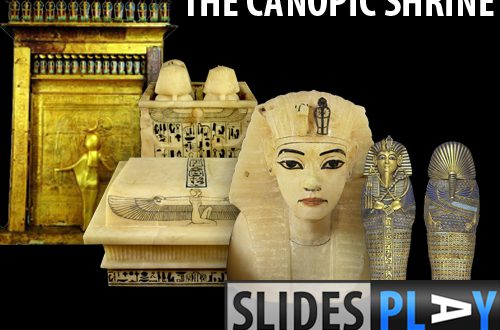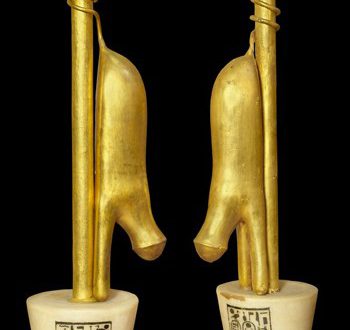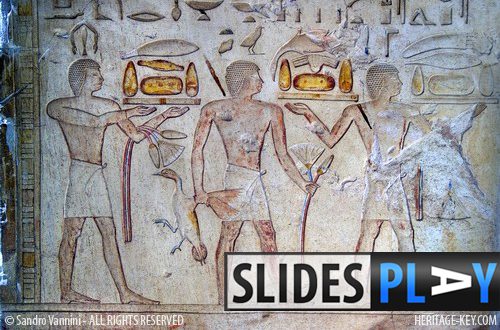Seti I is thought to have ruled over Egypt for between 11 to 15 years, overseeing the most vibrant artistic period in its dynastic history, and so it is fitting that his tomb was one of the most elaborate and beautifully decorated found in the Valley of the Kings. The well preserved tomb was found in 1817 by Giovanni Battista Belzoni, and is the longest discovered so far, stretching to at least 136 metres. Excavations still continue to this very day at the depth of the tomb as archaeologists seek to uncover the secrets of a mysterious tunnel starting at the burial crypt. Dr Zahi Hawass is overseeing the excavations, and talks about what he thinks may be uncovered there in a Heritage Key video (watch the video by clicking here).
The burial crypt of Seti I’s tomb (KV17) was where the sarcophagus of the Pharaoh was discovered, which would later be sold to the Sir John Sloane Museum, London. Further excavations inside the tomb during the 1960s and 70s led to damage which would close the tomb to the public, in order to preserve KV17, and allow restoration works to take place. The highly regarded Egyptology photographer Sandro Vannini was granted access to KV17 to take stunning images of the Tomb of Seti I, and Heritage Key is working with Sandro to bring these beautiful photographs to the internet.
Sandro Vannini is of course no stranger to photographing the beauty of such tombs and treasures of Egypt, as his recent book The Lost Tombs of Thebes:Life in Paradise, authored by Dr Hawass is evidence of. You can read Sandro’s account on how he took the photographs right here on Heritage Key, as well as watching him in action in a video featuring Dr Hawass and Dr Janice Kamrin (Watch the video here), and check out his latest book – A Secret Voyage.
Sandro Vannini’s Photography
Several of Egypt’s fascinating tombs have been photographed by the famed archaeology photographer Sandro Vannini, who has spent over a decade taking beautiful photography of some of the most famous artefacts and tombs in Egyptian history, such as the elusive Golden Mask of King Tutankhamun. Using his Hasselblad ELD Ixpress 528C, Sandro took these photographs of the stunning wall paintings in Tomb KV17’s burial chamber of King Seti I and even though the tomb has now been closed to the public, we can still enjoy the beauty of the Tomb of Seti I through Sandro’s lens.
Don’t miss out on new treasures!
This post is part of a series focussing on amazing photographs from ancient Egypt. Keep checking back as well keep adding new images by Sandro Vannini. To make sure you don’t miss out on any of the updates, simply subscribe by email to receive notifications when new images are uploaded. For the more digitally advanced, there’s also an RSS feed with updates available.
See More Amazing Photography by Sandro
Have a look at some of the other stunning photographs by Sandro Vannini here at Heritage Key:
- Tomb of Seti I(KV17):First Pillared Room
- Tomb of Seti I (KV17): The Burial Chamber
- Tomb of Seti I (KV17):The Antechamber
- Tomb of Seti I (KV17): The Crypt’s Side Chamber
Ask Sandro
We’ll be sitting down with our favourite photographer for an extended chat soon, so if you have any questions for Sandro we’ll send the answers straight to you!
The Burial Crypt of the Tomb of Seti I (KV17)
The burial crypt of Seti I’s tomb is where the discovery of the Pharaoh’s sarcophagus was made, although oddly his mummified corpse was missing and would later be found in a mummy cache. The sarcophagus itself was engraved with passages from the Book of the Dead and Book of Gates, and would later be offered moved to London after Sir John Sloane purchased it for his museum at Lincoln’s Inn Fields.
The walls in this room take their passages from the Opening of the Mouth – a funerary ceremony which is described in the Pyramid Texts. The Ancient Egyptians believed that after death from the mortal world, the deceased Pharaoh would pass onto the afterlife, and sensory functions such as smell, hear and taste would be restored, as well as the ability for the mummy to be able to interact with the world he is in.
The ceremony would be performed by priests during the funerary proceedings, and would allow reanimate the mummified corpse with the ability to experience their sensory functions again. The tomb paintings in this room showed that SetiI would have first been washed with his body facing south, with natron from Upper and Lower Egypt used to cleanse his mouth.
The body would then have been surrounded with burning incense, to add perfume to the mummified corpse of Seti I. Then Seti I was draped in clothes made from a panther’s skin, and a heart from an ox was sacrificed to the Pharaoh. The foreleg of the ox would then have been cut off, and waved in the direction of the body, a move which signified strength and may have been representative of a transfer of power.
The mouth of SetiI’s mummy would then have been opened, using a tool called the ntjrwy tool. Other gifts, including an ostrich feather, and sacred knife are offered to the reanimated corpse, as well as various foods and fruits. The ceremony of the Opening of the Mouth would then have been completed, and the body would be then have been moved to the burial chamber of the Tomb of Seti I.
HDVideo: Dr Zahi Hawass and the Mysterious Tunnel in the Tomb ofSeti I (KV17)
One of the most fascinating aspects of the tomb of Seti I is a long, descending passageway from the burial crypt, which has yet to be fully explored by archaeologists. It may be a passageway to mythical waters of the God Nun, or lead to somewhere completely new – the excavation’s lead Dr Zahi Hawass sheds some light on what may be in at the end of this mysterious tunnel in this must-see video!
You can see the transcript of the movie over on the Video Page, as well as seeing other fascinating films from the Valley of the Kings shot by Sandro in our weekly series. Additionally, you can find out more about Ancient Egypt on Heritage Key, as well as being able to explore the Valley of the Kings and the fascinating KV62 – King Tutankhamun’s tomb – in 3D in our exciting virtual experience! Also be sure to keep up to date on all new postings about Sandro’s photography from Egypt by subscribing to our feed, simply by entering your email address above.





